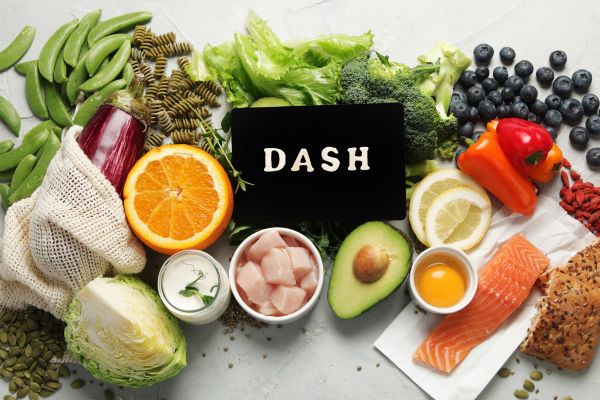The 16:8 intermittent fasting plan has become one of those wellness trends that people can’t stop talking about. And honestly, it makes sense. It’s simple, flexible, and doesn’t demand that you give up your favorite foods. Instead, it shifts when you eat, not necessarily what you eat. But let’s be real for a second—any plan sounds great on paper. The real question is: does it work in everyday life? And how do you actually stick to it without feeling like you’re battling your own appetite every single day?
Let’s walk through it in a way that actually makes sense, without the complicated jargon or unrealistic expectations.
Understanding the 16:8 Intermittent Fasting Plan
At its core, the 16:8 intermittent fasting plan is exactly what it sounds like. You fast for 16 hours and eat during an 8-hour window. Most people choose something like 12 p.m. to 8 p.m. or 10 a.m. to 6 p.m., but really, the beauty of it is flexibility. You choose a schedule that actually fits your lifestyle instead of forcing yourself into something that makes no sense.
During the fasting window, you stick to water, black coffee, or herbal tea. No sugar, no milk, no “just a sip of juice.” And yes, at first, this might feel a little strange, but your body adapts—faster than you’d think.
The thing is, the 16:8 intermittent fasting plan isn’t just about skipping breakfast. It plays with your body’s natural rhythms. When you give your digestive system a break, your insulin levels stabilize, and your body starts tapping into stored fat for energy. That’s one of the reasons people love it for weight loss. But it’s not only about losing weight; it’s also about feeling lighter, clearer, and more in control of your cravings.
Why the 16:8 Intermittent Fasting Plan Works for So Many People
You know how most diets tell you what you can’t have? No carbs. No sugar. No fun. The 16:8 intermittent fasting plan doesn’t work that way. You’re not obsessing over every bite. You’re just shifting your schedule, which feels a lot more doable.
One big reason people succeed with this plan is structure. When your eating window is shorter, you naturally eat fewer unnecessary calories. Not because you’re starving yourself, but because you’ve eliminated the mindless snacking that creeps in during late-night TV sessions or slow afternoons.
Plus, fasting gives your hormones—especially insulin—a chance to chill out. When insulin drops, your body becomes more effective at burning fat. It’s like giving your metabolism a little tune-up without much effort. That’s why some folks notice changes in their waistline even if they’re not hitting the gym five days a week.
Another underrated perk is mental clarity. Many people report feeling sharper in the mornings when they’re fasting. It sounds weird, but once your body adjusts, you’ll probably feel less sluggish and more focused. Blame it on stable energy levels and fewer sugar crashes.
How to Ease Into the 16:8 Intermittent Fasting Plan
If you’re thinking, “Sixteen hours? That sounds impossible,” don’t worry. Most of those hours happen while you’re asleep. The trick is to shift your meals gradually. You don’t have to jump straight into a hardcore schedule. Let’s be real—going from snacking at midnight to stopping at 6 p.m. overnight might be a shock to your system.
Start by pushing breakfast back just a bit. Maybe instead of eating at 8 a.m., you eat at 9 a.m. Do that for a few days. Then move it to 10 a.m., and so on. Before you know it, you’re naturally falling into your 8-hour eating window without feeling deprived or cranky.
Another tip is to stay hydrated. A lot of people confuse thirst with hunger, so water becomes your secret weapon. Black coffee or herbal tea in the morning can also help take the edge off during the earlier hours.
It also helps to pack your eating window with meals that actually satisfy you. Think protein, healthy fats, whole grains, and colorful veggies. If you fuel your body well, you won’t find yourself ravenous by the time your eating window closes.
What to Eat During the 16:8 Intermittent Fasting Plan
While the 16:8 intermittent fasting plan doesn’t forbid any specific foods, eating nutrient-dense meals will make your experience better. Let’s be honest: if you break your fast with a mountain of fries every day, you’re not going to feel great.
The best meals are balanced—something like chicken and veggies, oats with fruit, salmon and quinoa, or a solid smoothie when you need something quick. You don’t have to eat “perfectly,” but focus on foods that give you energy instead of draining it.
Try to avoid loading up on heavy, greasy meals right when your eating window opens. Your digestive system wakes up slowly, so give it something clean and light to kick things off. Later in the day, you can enjoy heavier meals without feeling weighed down.
And yes, you can still enjoy treats. The whole point of the 16:8 intermittent fasting plan is sustainability. If you completely cut out your favorite snacks, it becomes another short-lived diet instead of a livable routine.
Common Challenges and How to Deal With Them
Let’s not pretend this plan is effortless from day one. The first week or two can feel awkward. You might get hungry at times you used to eat, simply out of habit. Your stomach may grumble. You might find yourself looking at the clock more than usual. Totally normal.
The key is consistency. Once your body understands the new rhythm, those hunger pangs fade. A lot of people say they stop thinking about food so much, which is a relief on its own.
Social events can be another hiccup. Maybe dinner plans fall outside your eating window. Life happens. You don’t need to be rigid 100% of the time. If you have to shift your window or extend it occasionally, it doesn’t ruin your progress. Just pick up where you left off the next day.
Another challenge is overeating during the 8-hour window. It’s tempting to think, “I skipped all those hours, so I can eat anything now.” But overeating can make you feel bloated and sluggish. You don’t need to stuff yourself. Eat normally, enjoy your food, and listen to your body’s cues.
Who Should Be Careful Before Starting the Plan
Even though the 16:8 intermittent fasting plan is gentle compared to other methods, it’s not for everyone. If you’re pregnant, breastfeeding, have a history of eating disorders, or deal with specific medical conditions, talk to a healthcare professional first. Also, if you take medications that require food at certain times, fasting might interfere.
It’s always better to get the green light rather than guess.
The Bottom Line
The 16:8 intermittent fasting plan isn’t some magical miracle diet, but it is a realistic way to take control of your eating habits without feeling trapped by rules. It fits into busy schedules, encourages mindful eating, and gives your body time to reset every day. And honestly, it’s refreshing to follow something that doesn’t require counting every crumb or obsessing over strict meal plans.
If you approach it with patience and consistency, you’ll likely notice shifts not just in your weight, but in your energy, focus, and overall relationship with food. So if you’ve been curious about trying the 16:8 intermittent fasting plan, this might just be your sign to give it a shot—on your own terms, at your own pace.


